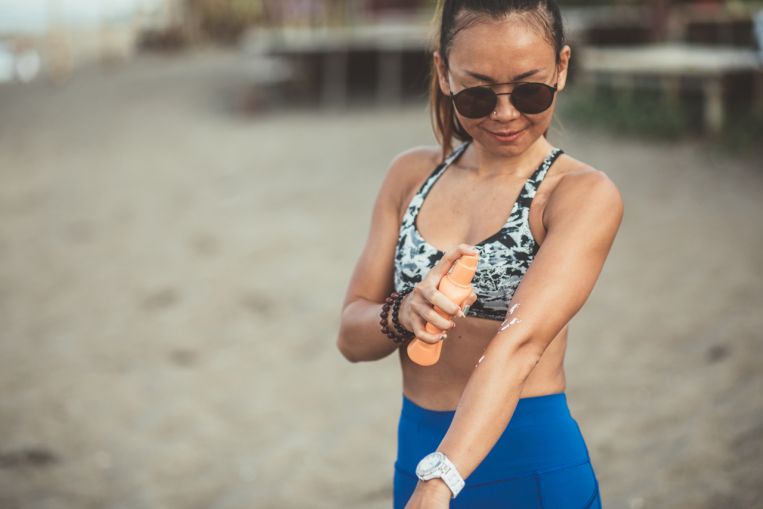SINGAPORE – Sunscreens come in many options and the terms on labels may be confusing.
And adding a layer of product to your skin may be the last thing on your mind, given the heat and humidity here.
In sunny Singapore, however, wearing sunscreen is especially pertinent.
Dr Ker Khor Jia of Dermatology & Co clinic says exposure to the sun can cause lasting and deep damage to skin.
“Harmful ultraviolet rays from excessive sun exposure can lead to photoageing, pigmentation and skin cancers. It is important to protect our skin from the sun, especially in Singapore, as the UV index can be high from 10am to 5pm daily,” the dermatologist adds.
As for the amount and frequency of sunscreen application, Dr Ker says about half a teaspoon of sunscreen should be applied to the face about half an hour before sun exposure.
“The ideal amount to achieve the SPF shown on the label is 2mg of sunscreen per square centimetre of skin – that is about two tablespoons for an average sized individual to fully cover the body.
“When outdoors, reapply sunscreen approximately every two hours, or after swimming or sweating, as sunscreen may be wiped off during these activities. When doing water sports, choose a waterresistant sunscreen.”
Sunscreen should be applied even when indoors and at home, Dr Ker adds.
“Ultraviolet A (UVA) rays can pass through glass, so even when indoors or in a car, these harmful rays which cause premature ageing and skin cancer will affect your skin. Visible light indoors can also contribute to photoageing and pigmentation.”
When it comes to choosing a good sunscreen, she says there are four things to look out for:
1. Broad Spectrum
Dr Ker says this means the sunscreen protects against UVB and UVA rays and helps prevent skin cancer and sunburn.
2. An SPF of at least 50
“While many guidelines suggest an SPF of at least 30, I recommend at least SPF50, as most people will not apply half a teaspoon of sunscreen to the face.
“You get adequate protection from an SPF30 sunscreen only if you apply an amount equivalent to half a teaspoon to your face. In reality, most people apply much less than that. You get better protection with SPF50 with less than the recommended amount,” says Dr Ker.
3. Water resistance
If you are doing water sports, or activities that make you sweat, choose labels which state “water resistant” (effective for up to 40 minutes in water) or “very water resistant” (effective for up to 80 minutes in water).
4. Non-comedogenic
This means the sunscreen does not clog pores.
It is important to choose a sunscreen that can easily be incorporated into your skincare routine and worn comfortably every day.
Says Dr Ker: “Many people put off using sunscreen as they feel it is sticky and leaves a thick film on the skin, causing clogged pores.
“There are good sunscreens in the market with ‘dry touch’, ‘matte finish’ or ‘oil control’ stated on the labels. These provide a better finish on the skin and do not leave any residue.”
Common sunscreen terms
1. Physical/mineral sunscreens
Physical sunscreens contain zinc oxide and/or titanium dioxide, which work like a shield on the surface of your skin as they deflect ultraviolet rays, says dermatologist Ker Khor Jia.
These sunscreens suit sensitive skin as they usually do not cause allergies. But physical sunscreens tend to leave a sticky white residue on the skin and are less cosmetically pleasing than chemical sunscreens. Some physical sunscreen brands are easier to apply, so you may want to check out the options, she adds.
2. Chemical sunscreens
Such sunscreens have one or more of the following ingredients: oxybenzone, avobenzone, octisalate, octocrylene, homosalate and octinoxate, says Dr Ker.
These work by absorbing ultraviolet rays. These formulations tend to be easier to apply and do not leave a sticky white residue.
But these compounds have a higher chance of causing allergies in people with sensitive skin, she adds.
3. UVA
Ultraviolet rays that cause ageing.
4. UVB
Ultraviolet rays that cause sunburn.
5. SPF
This stands for sun protection factor, with regard to UVB rays.
The SPF value refers to the solar energy required to burn skin protected with the sunscreen. The higher the value, the greater the protection offered against the sun.
6. PA
This stands for the protection grade of UVA rays. The + that follows refers to the amount of protection against UVA rays; PA+ provides some UVA protection, PA++ provides moderate protection, PA+++ provides high protection, and PA++++ provides extremely high protection.













































